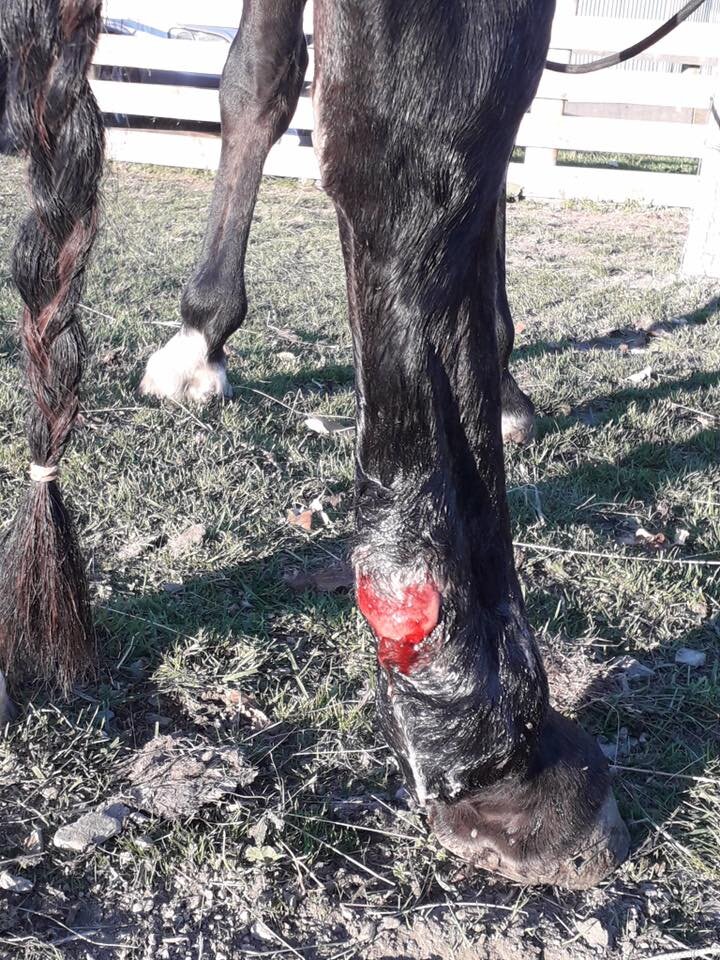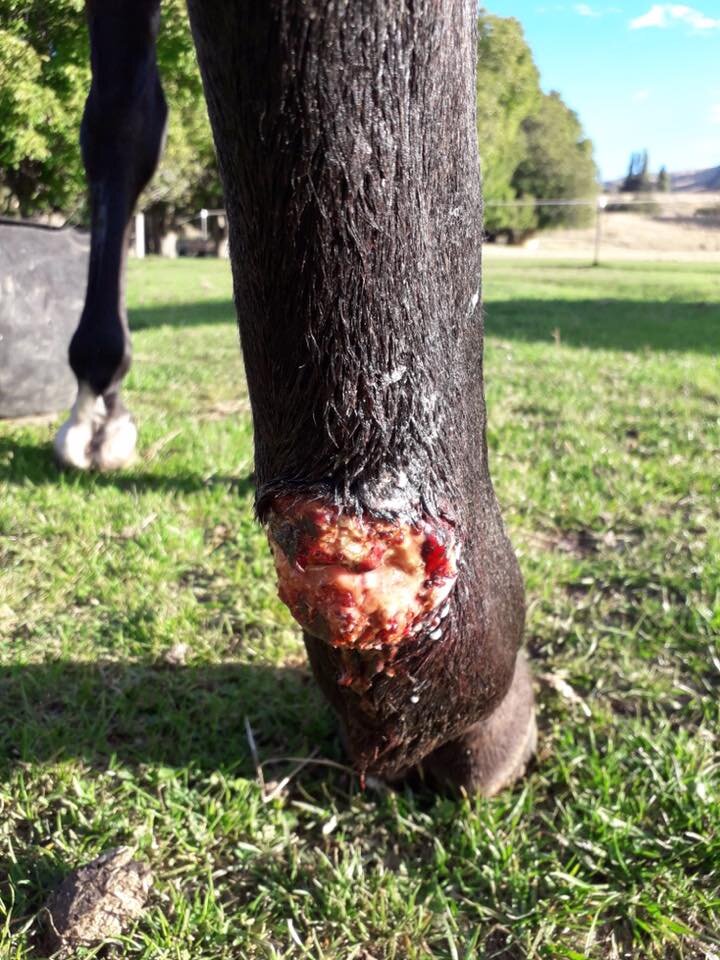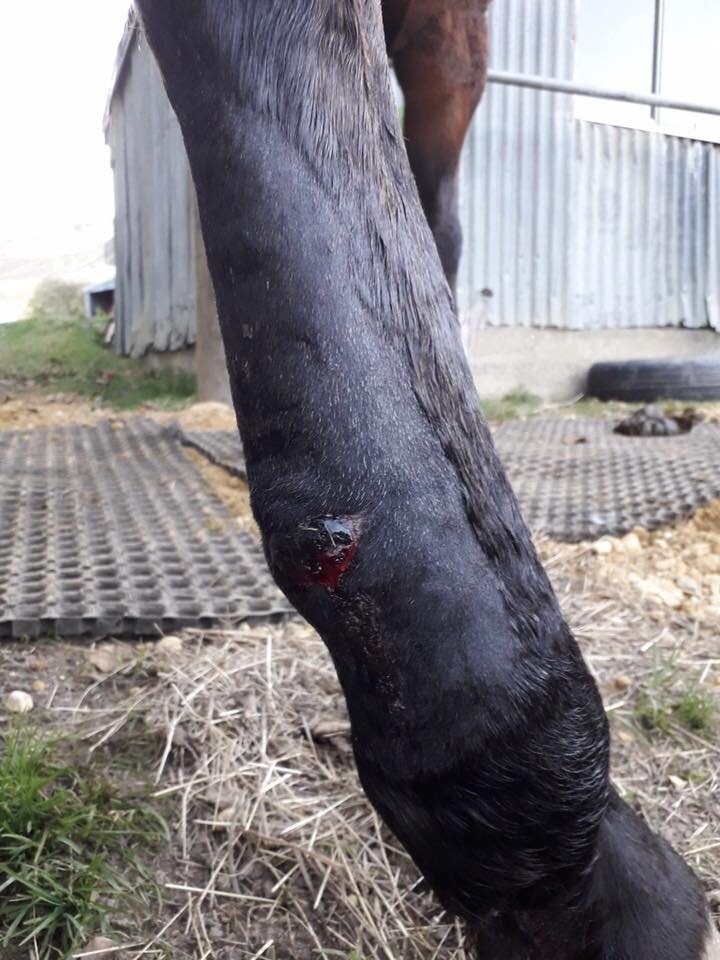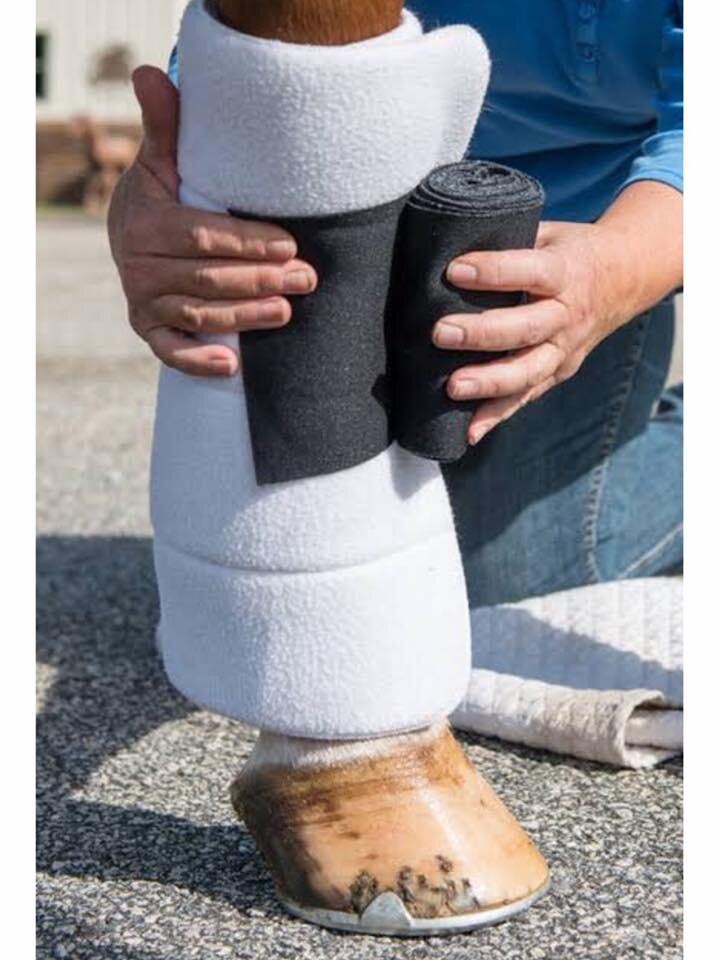To bandage or not to bandage. That is the million dollar questions.
Firstly let’s clarify what we mean by a bandage (I am discussing limbs today only).
A bandage is designed to cover an area of the limb, provide a good wound environment for healing, absorb any wound exudate (discharge), and the last layer is to keep a certain amount of compression on the wound and stick the bandage up on the leg.
A non surgical wound heals by granulation tissue formation (pink tissue that fills the hole) and then epithelialisation (new skin formation). Epithelialisation is seen as a thin white to clear line surrounding the wound edges.
Firstly we need to consider if we even need to bandage the leg:
Bandaging does provide a wonderful environment for wound healing. It promotes granulation tissue formation, and speeds up the epithelialisation process (new skin formation). The big concern with distal limb wounds is proud flesh. Proud flesh describes granulation tissue which has become excessive for that particular wound healing, and usually this means it has risen above the level of the skin. We often think about getting rid of proud flesh. My advice would be the promote faster skin growth to prevent proud flesh rather than thinking of getting rid of the proud flesh. The bandage will help promote new skin growth. However, if there is a deep wound that is small, or a superficial (not full skin thickness) wound, then these may be better treated with topical treatments rather than bandaging. This eliminates the risk of the negative effects seen through bandaging.
Bandaging over a wound (primarily layer):
We need to consider if we want the dressing to stick to the wound or not. For example in a very dirty wound you may want the dressing to dry on the wound so that when it is removed, it removes some of the debris. Most likely however, you are wanting the dressing to cover the wound and prevent any padding from sticking to it. This is called an non-adherent wound dressing and can come in forms such as paraffin gauze dressings or melolin type dressings. This dressing will also allow you to apply an ointment to promote wound healing.
Next you need to consider the amount of padding you use (secondary layer):
This will also determine how long you can leave the bandage on for, and how firm the pressure is applied. The more padding used, often the longer the bandage can be left on, and the least risk of bandage sores. A larger amount of padding also can absorb more wound exudate (discharge) therefore reducing the risk of skin sores developing.
External layer (tertiary layer):
The last layer of the bandage is usually vetwrap and elastoplast. This allows compression, waterproofing, and keeps the bandage on the leg. For example, a splint bandage is applied with multiple layers of padding and a compression material such as vetwrap. The compression in this bandage is increased with each layer, until a very firm bandage is achieved with a large amount of support.
Please note: A firm bandage can never be applied to a bandage with little padding; you will get a severe bandage bow, haematoma’s, or skin death.
Bandage placement:
Where the bandage is placed on the leg is important, as most of our horses are kept in paddocks, therefore are likely to be moving around. Firstly I would like to say this is not ideal with a bandaged leg, because the more movement you have, the more risk of the bandage slipping and causing damage from uneven pressure. Confinement is the key. However when this is not possible, please consider placing a bandage on the limb without covering movable joints. For example, a wound on the canon bone may only require a bandage from the top of the fetlock to the bottom of the hock. The front of the fetlock joint is a very common area for bandage sores to develop from friction rubs and is best avoided. If a bandage needs to be applied from toe to hock, then confine the horse, and use a firm bandage with lots of padding to minimise leg bend (please get further advice on this first).
Bandaging a limb for support of a structural issue such as a fracture or severe flexor tendon injury requires veterinary assistance. Sometimes foot wedges are use to align to bony column better to prevent undue forces on the leg during weight bearing.
I hope this just gives you a little bit of information on why we bandage, if we need to bandage, and how to use a bandage to promote good wound healing without risking secondary complication such as skin sores and bandage rubs.
My final note is to say there are other reason we may bandage legs, which could be to reduce sun exposure or to keep flies away







